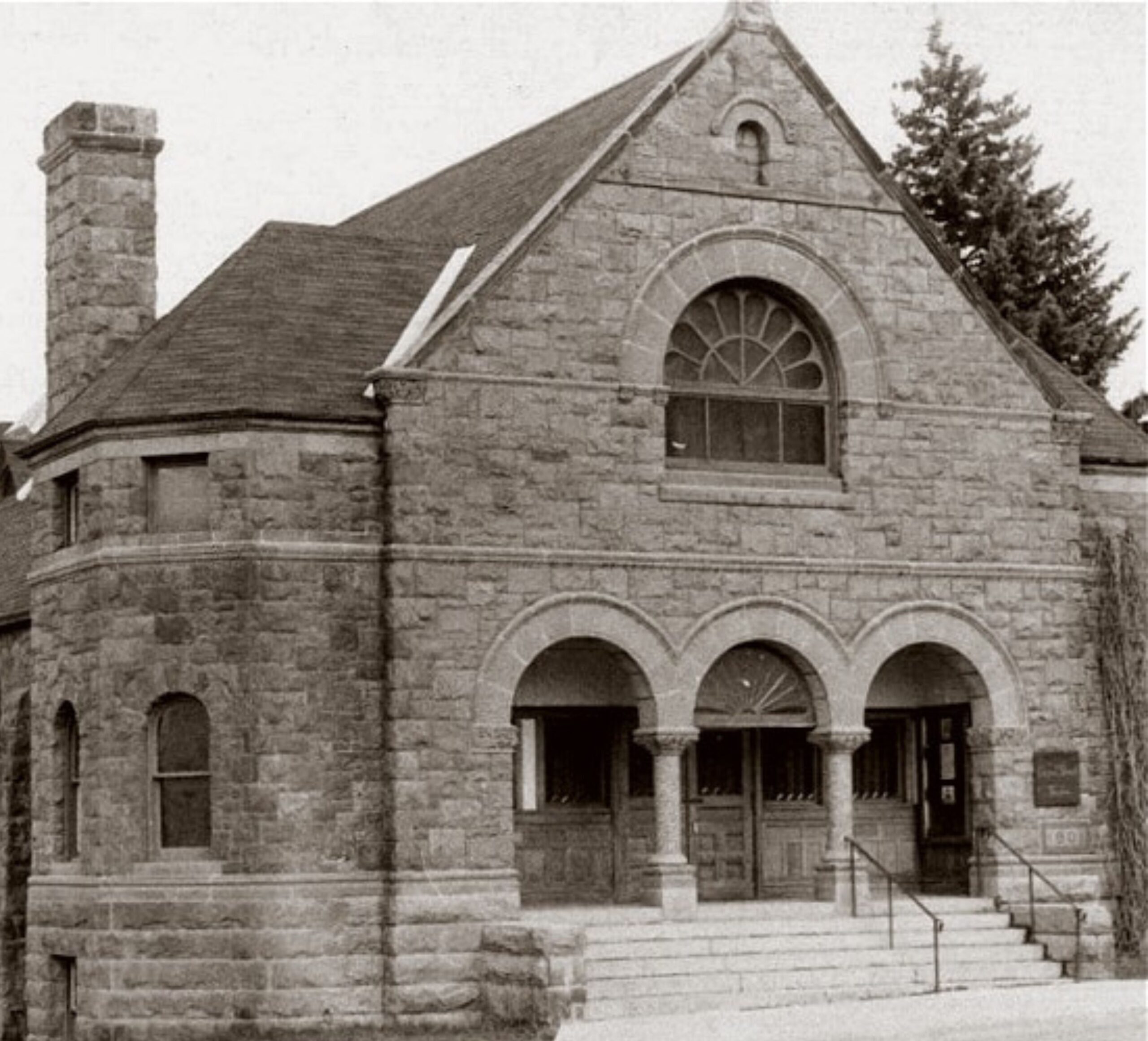The History of Grandstreet Theatre
The Building
The building we now call the Grandstreet Theatre has sheltered Helena residents for over one hundred years –first as a house-of-worship, later as an interim city library following Helena’s destructive earthquakes, and since 1976, as the home of Montana’s oldest continuous community theater.
Built as a Unitarian Church in 1901, the facility included the sloping floor and the proscenium stage area as you see them today. Even then, early church documents indicated it was intended as a multi-use facility. The Reverend Leslie Willis Sprague was quoted in the Montana Sunday Record in October 1901:
“It is not our purpose to so consecrate this building that it cannot be used for all sorts of conventions, meetings, entertainments, and in fact, for anything that tends to build up the better life … and we expect to have social rooms which will be in demand for various sorts of gatherings for clubs, classes, social events and all the rest….”

“I for one,” continued Reverend Sprague, “do not believe in putting $20,000 into a building and then using it but a few hours each week. Nor do I believe God wants churches that are too holy for usefulness in any case, even for the entertainment and pastime of His children….”
In 1933, the church was donated to the City of Helena in memory of Ellen Dean for use as an interim library following the near destruction of the original facility by earthquakes. Renovations were made to the building by leveling the house floor and adding a mezzanine.
In 1976, Broadwater Productions, known as Grand Street Theatre, assumed occupancy and transformed the building into Helena’s full-time, year-round community theater.
The Helena/Lewis & Clark County Historic Preservation Commission has recognized the efforts of Grandstreet Theatre in restoring the theater to its former elegance with a historic preservation award to Managing Director Tom Cordingley in May 1996. Growing Friends of Helena also awarded Grandstreet with a landscaping award in 2001.
Grandstreet Theatre goers have noticed a new look over recent years. Gone are the worn seats that were old when a Grand Street Theatre work crew removed, loaded and U-Hauled them from a theater in Dillon . . . replacing them are 200 “brand new, out-of-the-box” seats. The rose carpeting also has been replaced and new draperies cover the church-style windows.

Many of our renovations were made possible by dollars the Theatre received from the city’s tax-increment financing funds. That, combined with an additional fund-raising effort by Grandstreet Theatre’s patrons and generous givers, enabled Grandstreet to complete the restoration of the auditorium, box office, balcony, backstage area, and lobby.
In early 2005, the large window over the front door was replaced with a window design that was found in the 1901 blueprints to finish off the intended design of the architects. Woodcrafter Tim Carney and “Glassman” Barry Hood worked together to create a wonderful addition of Public Art to Downtown Helena with the help of donations from the public and government entities.
To honor family and/or friends, there are still some unsponsored chairs available on the balcony for those interested in contributing to our continuing capital improvement efforts.
The Theatre Company
The history of Grandstreet Theatre begins with the vision of a man, Carl Darchuck, a Montana native, who returned in May 1975 to investigate the potential for starting a community theater in Helena, much as he did in Fort Peck, Montana, Tacoma, and Port Townsend, Washington.
Within a month he and a handful of dedicated volunteers had established the ballroom of the historic Placer Hotel (at the corner of Grand St. and Last Chance Gulch) as the base of his operation. Grand Street Theatre opened its first production, How to Succeed in Business Without Really Trying in August 1975. In their first ten months of operation, they did ten shows on their postage stamp stage. After How to Succeed in Business… came Our Town, South Pacific, The Owl and the Pussycat, The Mousetrap, A Christmas Carol, Bye Bye Birdie, The Clown Prince of Wanderlust (a children’s play), Hello Dolly!, Inherit the Wind and The Music Man.
During those first ten months, Grand Street Theatre entertained some 8,000 theatre-goers and involved 150 volunteer actors, technicians, and musicians, a few who still find his and her way back to the boards after all those years.

In 1933, the Unitarian Church was turned over to the city to replace the original library facility that had been nearly destroyed by earthquakes. The original architect’s plans called for a church that was to have a stage, auditorium, box office, and dressing rooms, hardly normal specifications for a church. However, the Unitarians wanted a suitable facility for pageants, recitals, and dramas. In its transformation from a church to a library, the entire complexion of the building was changed to make it more suitable as a library.
In late August 1976, the “library” again became available. A local architectural firm donated renovation plans, and Grand Street Theatre’s staff and members went into action. False floors and a mezzanine had to be carefully torn out, and carpenters were brought in to restore the tiered seating in the balcony and build a second exit stairway.
But a major question remained unanswered: How could a year-old theater group finance such a project? The answer: Land valued at $50,000 was donated to the Grand Street Theatre by Esther and Wib Harrer, local ranchers. Their interest in promoting good theater in the Helena Valley cast them as the answer to Darchuck’s prayers. Grand Street Theatre was able to sell the land and convert the funds to desperately needed improvements.
With the building re-converted to a theater format, Grand Street Theatre opened its second season with its sixteenth production, The Man of La Mancha.

Initially, Grand Street was used as two words, but in 1983 the Board of Directors of Broadwater Productions, Grand Street Theatre’s governing board, combined the two words into one to avoid confusion on the name of the Theatre and its original location on Grand Street and Last Chance Gulch.
The Theatre has flourished under the guidance of several skilled directors, most notably Don McLaughlin, who served for fourteen years, leaving in August 1993. During the McLaughlin years, Don’s wife, Janet, began the Grandstreet Theatre school which has grown to include a summer program in addition to its original school-year program.
From the building and all the people who have walked through the door for the past 49 years Grandstreet Theatre has been a place of community. It has been a gathering house to experience new worlds through top-notch productions, and to build character both on and off the stage.





